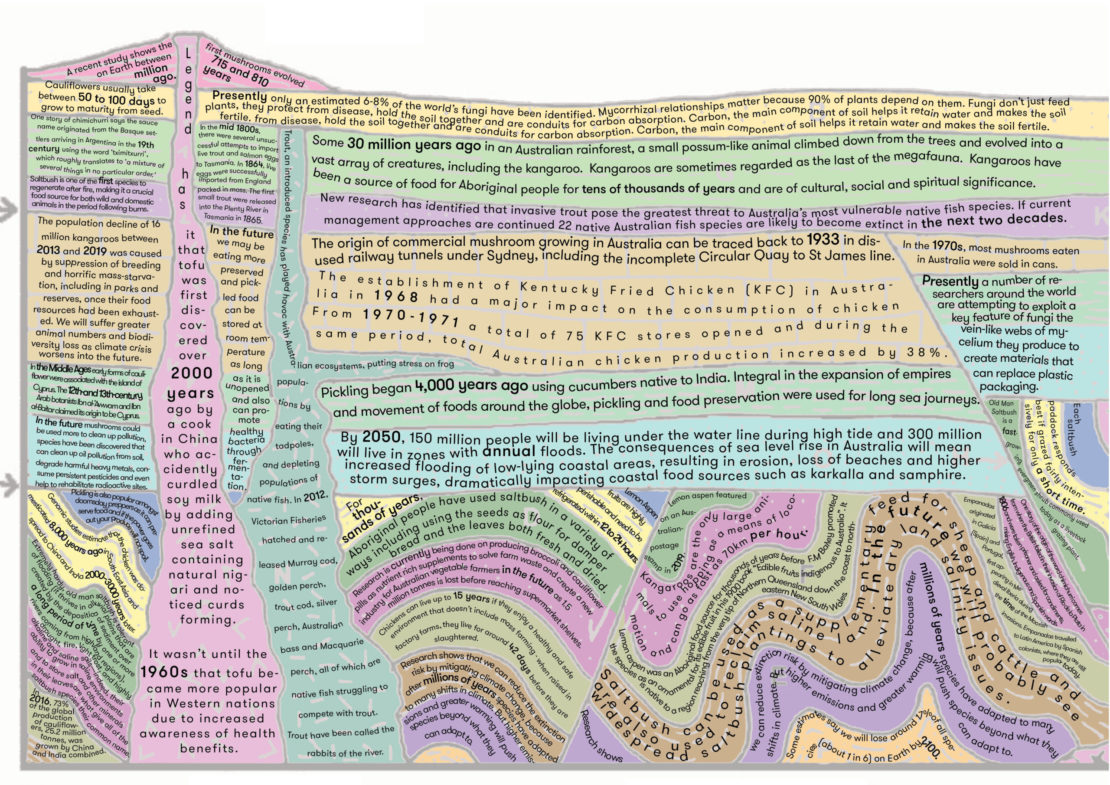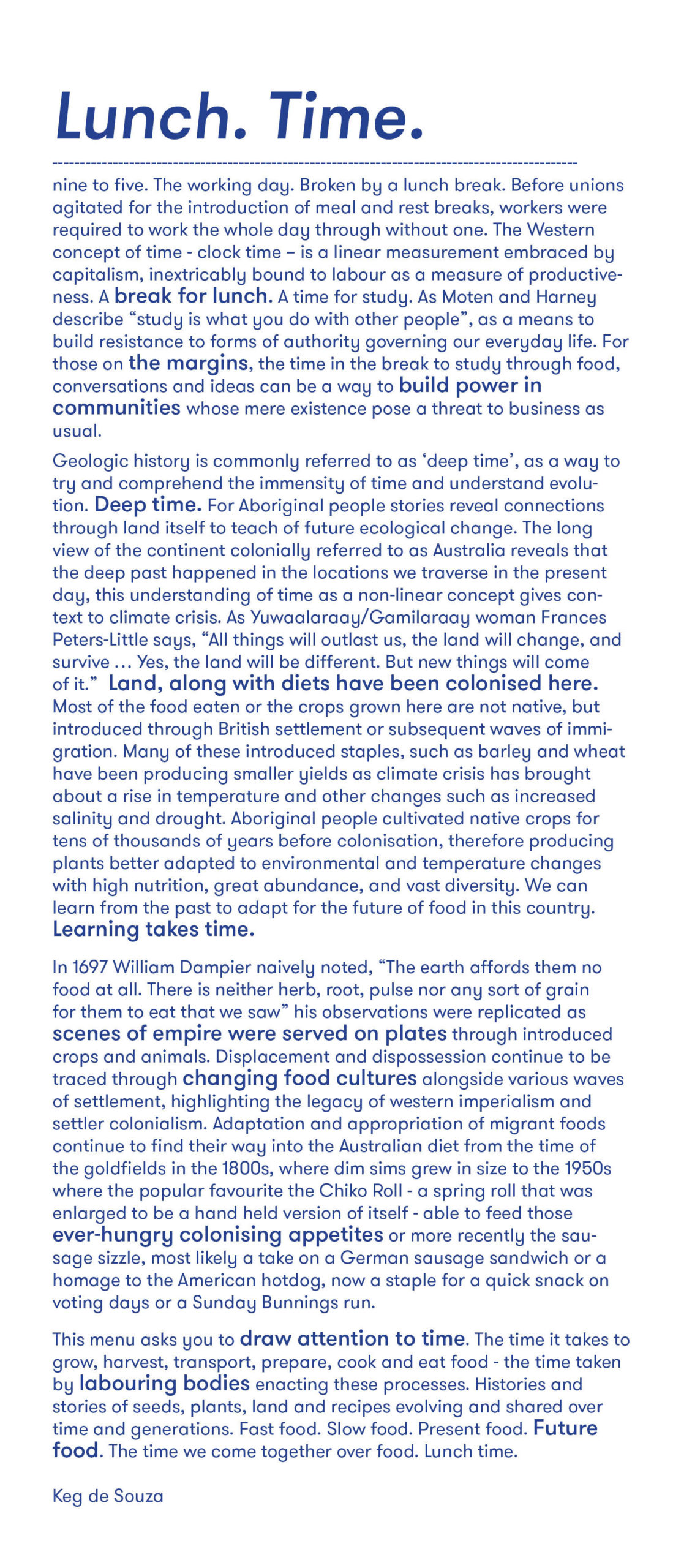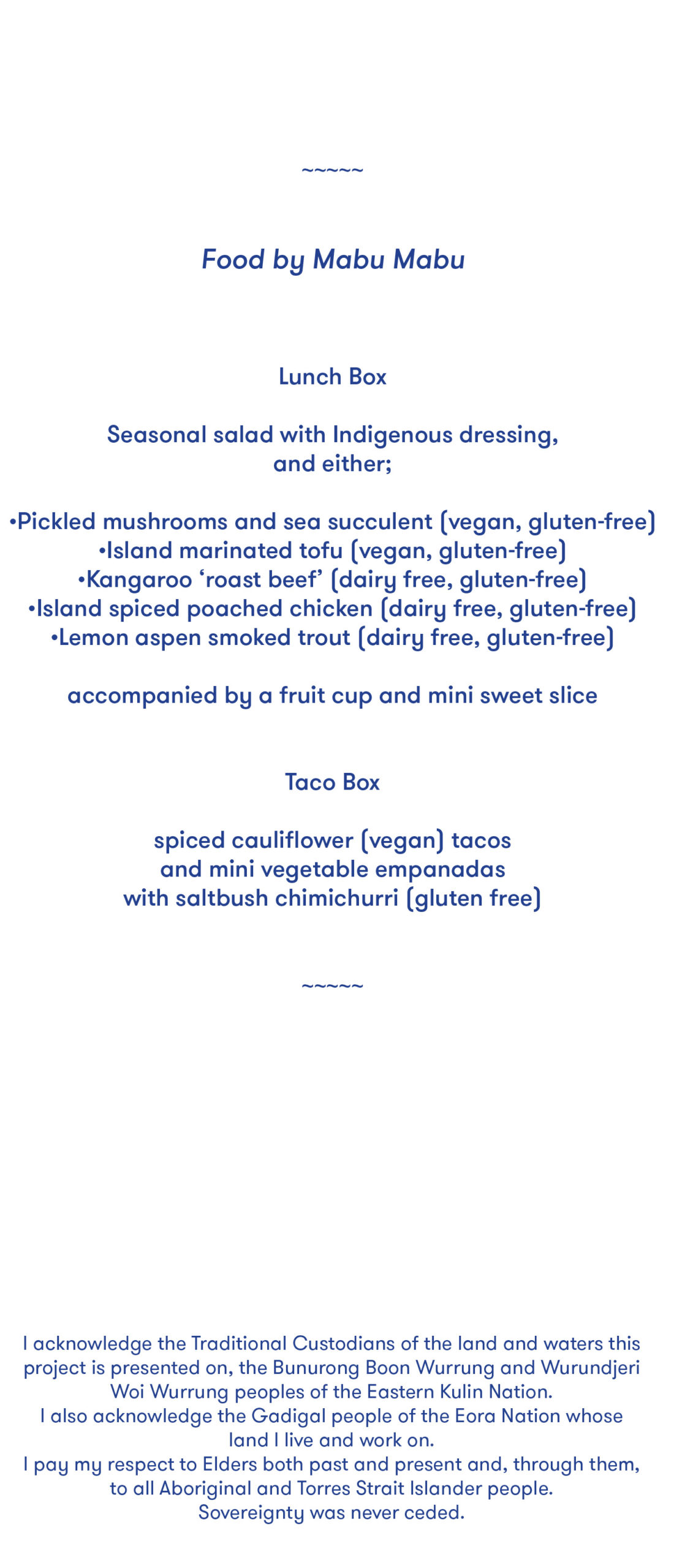Description
Map and accompanying text responding to ingredients from Mabu-Mabu‘s lunch menu and ideas of time through the Forum’s theme of ‘The Long View’.
Commissioned for Living Cities Forum 2021 by the Naomi Milgrom Foundation.
Special thanks to Nornie Bero (Mabu Mabu), Jen Zielinska and Sam Redston.
View map here
Lunch. Time.
————————————————————————————————
nine to five. The working day. Broken by a lunch break. Before unions agitated for the introduction of meal and rest breaks, workers were required to work the whole day through without one. The Western concept of time – clock time – is a linear measurement embraced by capitalism, inextricably bound to labour as a measure of productiveness. A break for lunch. A time for study. As Moten and Harney describe “study is what you do with other people”, as a means to build resistance to forms of authority governing our everyday life. For those on the margins, the time in the break to study through food, conversations and ideas can be a way to build power in communities whose mere existence pose a threat to business as usual.
Geologic history is commonly referred to as ‘deep time’, as a way to try and comprehend the immensity of time and understand evolution. Deep time. For Aboriginal people stories reveal connections through land itself to teach of future ecological change. The long view of the continent colonially referred to as Australia reveals that the deep past happened in the locations we traverse in the present day, this understanding of time as a non-linear concept gives context to climate crisis. As Yuwaalaraay/Gamilaraay woman Frances Peters-Little says, “All things will outlast us, the land will change, and survive … Yes, the land will be different. But new things will come of it.” Land, along with diets have been colonised here. Most of the food eaten or the crops grown here are not native, but introduced through British settlement or subsequent waves of immigration. Many of these introduced staples, such as barley and wheat have been producing smaller yields as climate crisis has brought about a rise in temperature and other changes such as increased salinity and drought. Aboriginal people cultivated native crops for tens of thousands of years before colonisation, therefore producing plants better adapted to environmental and temperature changes with high nutrition, great abundance, and vast diversity. We can learn from the past to adapt for the future of food in this country. Learning takes time.
In 1697 William Dampier naively noted, “The earth affords them no food at all. There is neither herb, root, pulse nor any sort of grain for them to eat that we saw” his observations were replicated as scenes of empire were served on plates through introduced crops and animals. Displacement and dispossession continue to be traced through changing food cultures alongside various waves of settlement, highlighting the legacy of western imperialism and settler colonialism. Adaptation and appropriation of migrant foods continue to find their way into the Australian diet from the time of the goldfields in the 1800s, where dim sims grew in size to the 1950s where the popular favourite the Chiko Roll – a spring roll that was enlarged to be a hand held version of itself – able to feed those ever-hungry colonising appetites or more recently the sausage sizzle, most likely a take on a German sausage sandwich or a homage to the American hotdog, now a staple for a quick snack on voting days or a Sunday Bunnings run.
This menu asks you to draw attention to time. The time it takes to grow, harvest, transport, prepare, cook and eat food – the time taken by labouring bodies enacting these processes. Histories and stories of seeds, plants, land and recipes evolving and shared over time and generations. Fast food. Slow food. Present food. Future food. The time we come together over food. Lunch. time.
Keg de Souza



